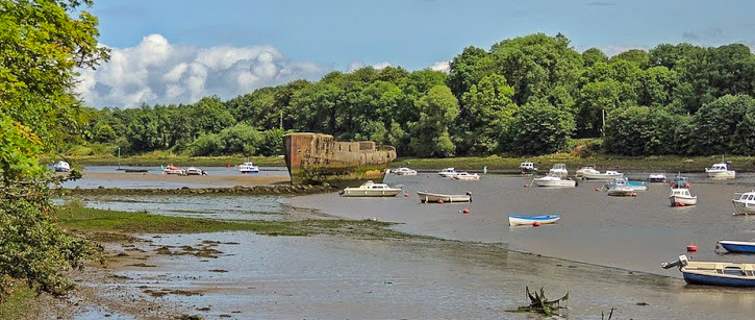The concrete ship SS Creteboom, Ballina in Co. Mayo

Strolling around Ballina Quay and Belleek Wood an iconic and mysterious part of Ballina’s infrastructure comes into sight.
It is the concrete ship SS Creteboom which lies abandoned in the water of the River Moy as an eye-catching focal point.
It was ordered one hundred years ago by the Ministry of Shipping during the First World War.
Concrete ships were ships made of steel and reinforced concrete in place of wood and more steel, due to shortages of steel during WWI and WWII.
In 1917, Britain needed to transport a stately load of iron-ore from Spain, and a concrete fleet was built for this purpose.
Only 12 ships and 52 barges were completed, and in 1918, at war end, the programme was cancelled.
In 1922, the London based company Stelp & Leighton Ltd. bought all the concrete ships (the SS Creteboom included), setting up the Crete Shipping Co in Sunderland.
All the ships were used to transport coal to the Continent until 1924 when the company closed down, and they were left mothballed on the Tyne.
After a span of time in the icy water of the Baltic and on the River Ware the Creteboom was bought by the South Stockton Shipbreaking Co. In 1935 it was dismantled, and all its metal parts were removed.
In 1937 its concrete bulk, along with other wrecks, was sold to the Ballina Harbour Commissioners.
The idea was to sink them at the mouth of the River Moy and create a sand barrier. Travelling to Ballina from England the bulk got damaged and started taking on water. The Harbourmaster, Mr Eddie Melvin, ordered to tow it to mid-stream where it lay for 40 years.
In 1939 the sand barrier project was abandoned because of the WWII and the legal action taken by the Moy Fishery Company which feared a harmful interference with the run of salmon into the Moy.
In 1974 the SS Creteboom was removed, cleaned and placed where is now.
